Solar eclipse of November 25, 2011
A partial solar eclipse occurred on Friday 25 November, 2011. A solar eclipse occurs when the Moon passes between Earth and the Sun, thereby totally or partly obscuring the image of the Sun for a viewer on Earth. A partial solar eclipse occurs in the polar regions of the Earth when the center of the Moon's shadow misses the Earth. This eclipse was visible across Antarctica in its summer 24-hour day sunlight, and New Zealand near sunset with less than 20% of the Sun obscured. Parts of the western Antarctic Peninsula experienced nearly 90% obscuration of the Sun. The eclipse belonged to Saros 123 and was number 53 of 70 eclipses in the series.
| Solar eclipse of November 25, 2011 | |
|---|---|
 Map | |
| Type of eclipse | |
| Nature | Partial |
| Gamma | -1.0536 |
| Magnitude | 0.9047 |
| Maximum eclipse | |
| Coordinates | 68.6°S 82.4°W |
| Times (UTC) | |
| (P1) Partial begin | 4:23:14 |
| Greatest eclipse | 6:21:24 |
| (P4) Partial end | 8:17:16 |
| References | |
| Saros | 123 (53 of 70) |
| Catalog # (SE5000) | 9534 |
This was the last of four partial solar eclipses in 2011, with the others occurring on January 4, 2011, June 1, 2011, and July 1, 2011.
Images

Animated path
Related eclipses
Eclipses of 2011
- A partial solar eclipse on January 4.
- A partial solar eclipse on June 1.
- A total lunar eclipse on June 15.
- A partial solar eclipse on July 1.
- A partial solar eclipse on November 25.
- A total lunar eclipse on December 10.
It proceeded the total lunar eclipse which occurred on December 10, 2011.
Solar eclipses 2011–2014
This eclipse is a member of the 2011–2014 solar eclipse semester series. An eclipse in a semester series of solar eclipses repeats approximately every 177 days and 4 hours (a semester) at alternating nodes of the Moon's orbit.[1][Note 1]
| Solar eclipse series sets from 2011–2014 | ||||||
|---|---|---|---|---|---|---|
| Descending node | Ascending node | |||||
| Saros | Map | Gamma | Saros | Map | Gamma | |
118.jpg) Partial from Tromsø, Norway |
2011 June 1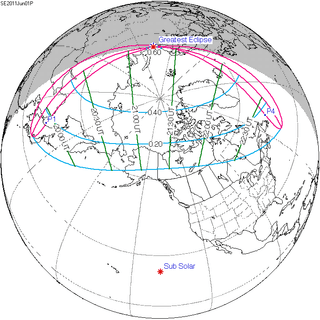 Partial |
1.2130 | 123 | 2011 November 25 Partial |
-1.0536 | |
128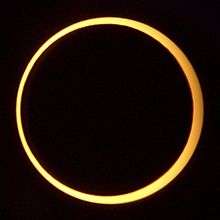 Middlegate, Nevada |
2012 May 20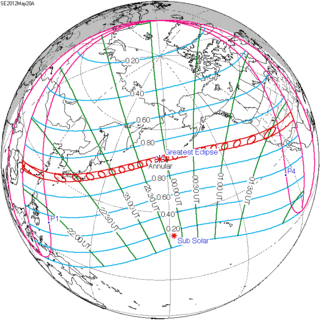 Annular |
0.4828 | 133.jpg) Cairns, Australia |
2012 November 13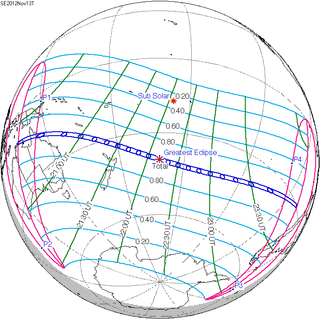 Total |
-0.3719 | |
| 138 Churchills Head, Australia |
2013 May 10 Annular |
-0.2693 | 143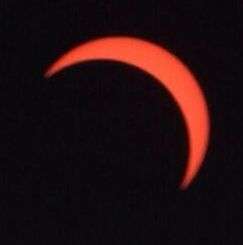 Partial from Accra, Ghana |
2013 November 3 Hybrid |
0.3271 | |
148_cropped.jpg) Partial from Adelaide, Australia |
2014 April 29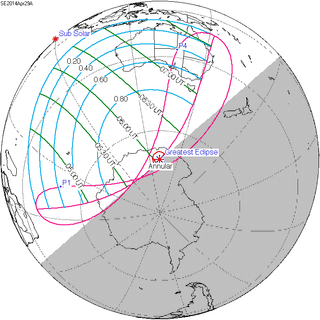 Annular (non-central) |
-0.9999 | 153 Partial from Minneapolis |
2014 October 23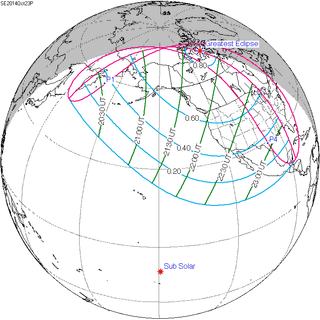 Partial |
1.0908 | |
Metonic series
The metonic series repeats eclipses every 19 years (6939.69 days), lasting about 5 cycles. Eclipses occur in nearly the same calendar date. In addition, the octon subseries repeats 1/5 of that or every 3.8 years (1387.94 days). All eclipses in this table occur at the Moon's ascending node.
| 21 eclipse events, progressing from south to north between July 1, 2000 and July 1, 2076 | ||||
|---|---|---|---|---|
| July 1–2 | April 19–20 | February 5–7 | November 24–25 | September 12–13 |
| 107 | 109 | 111 | 113 | 115 |
| July 1, 1981 | April 20, 1985 | February 6, 1989 | November 24, 1992 | September 12, 1996 |
| 117 | 119 | 121 | 123 | 125 |
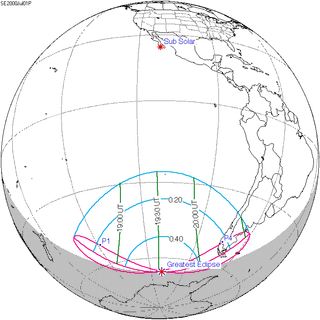 July 1, 2000 |
 April 19, 2004 |
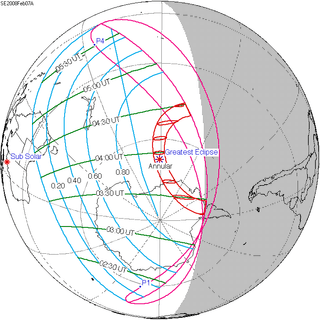 February 7, 2008 |
 November 25, 2011 |
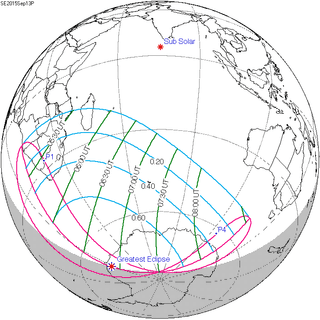 September 13, 2015 |
| 127 | 129 | 131 | 133 | 135 |
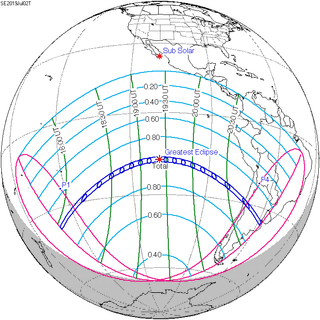 July 2, 2019 |
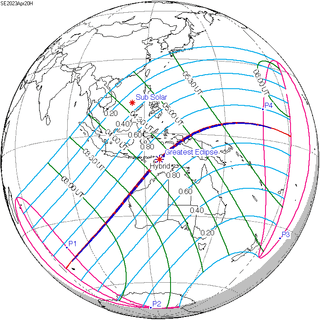 April 20, 2023 |
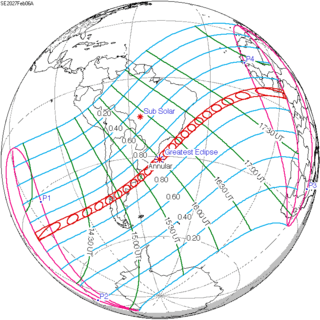 February 6, 2027 |
 November 25, 2030 |
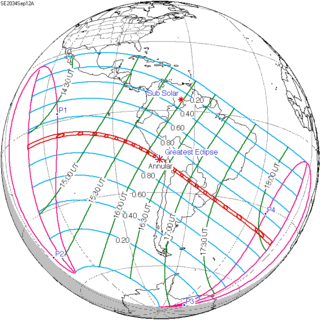 September 12, 2034 |
| 137 | 139 | 141 | 143 | 145 |
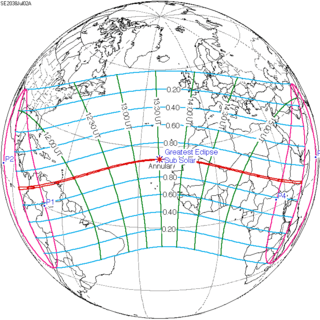 July 2, 2038 |
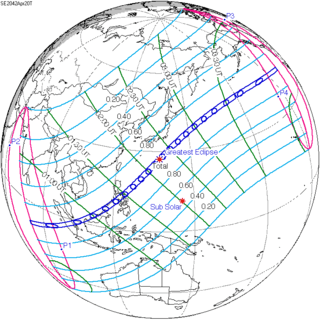 April 20, 2042 |
 February 5, 2046 |
 November 25, 2049 |
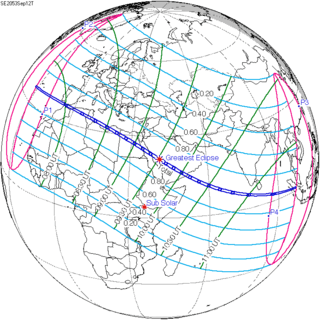 September 12, 2053 |
| 147 | 149 | 151 | 153 | 155 |
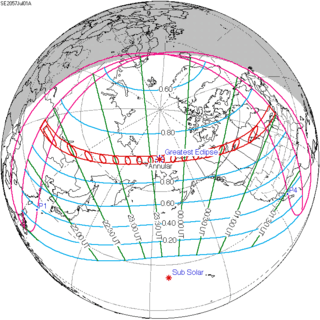 July 1, 2057 |
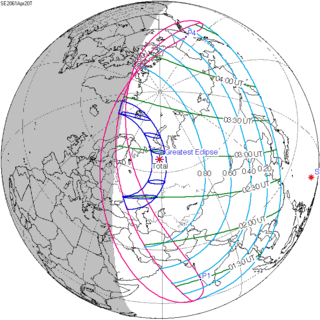 April 20, 2061 |
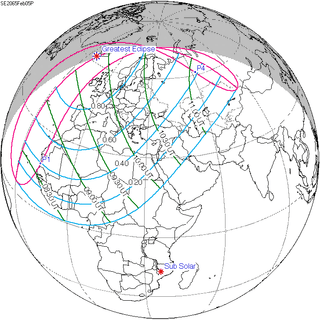 February 5, 2065 |
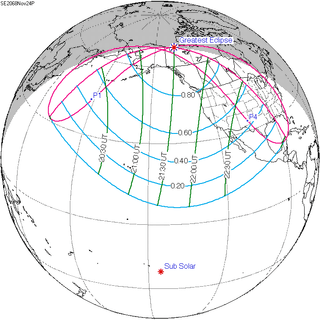 November 24, 2068 |
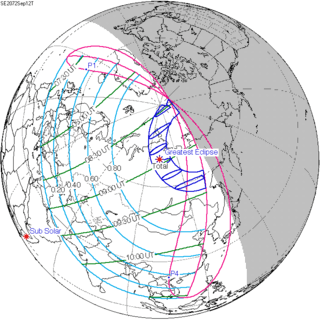 September 12, 2072 |
| 157 | 159 | 161 | 163 | 165 |
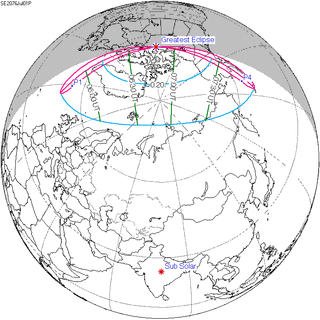 July 1, 2076 |
April 19, 2080 | February 6, 2084 | November 25, 2087 | September 13, 2091 |
Notes
- The partial solar eclipses of January 4, 2011 and July 1, 2011 occurred in the previous semester series.
References
| Wikimedia Commons has media related to Solar eclipse of 2011 November 25. |
- APOD December 2, 2011
- http://eclipse.gsfc.nasa.gov/SEplot/SEplot2001/SE2011Nov25P.GIF
- www.space.com: Solar Eclipse Wows Lucky Skywatchers in New Zealand
- van Gent, R.H. "Solar- and Lunar-Eclipse Predictions from Antiquity to the Present". A Catalogue of Eclipse Cycles. Utrecht University. Retrieved 6 October 2018.
.jpg)